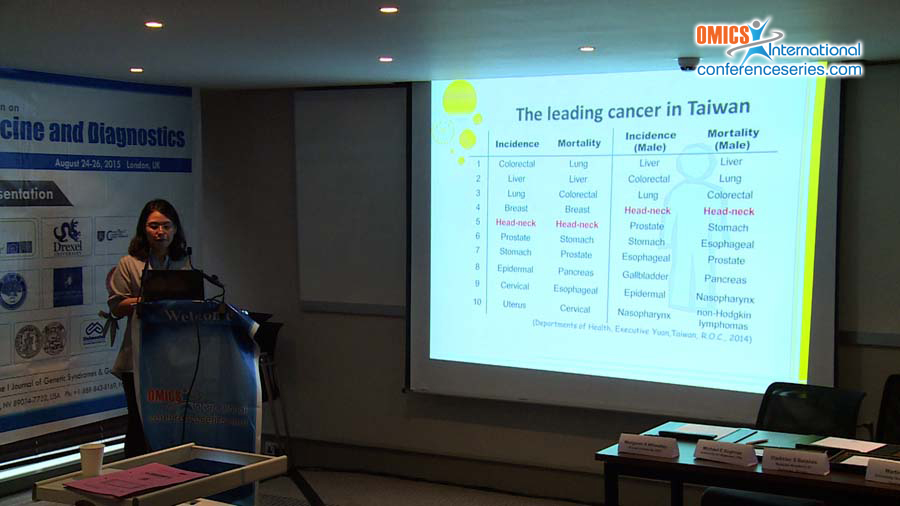
Ya-Ching Lu
Chang Gung University, Taiwan
Title: Oncogenic function and early detection potential of miRNA-196 in head-neck cancer
Biography
Biography: Ya-Ching Lu
Abstract
Molecular targets for cancer diagnosis and therapeutic usage are important for disease management. Here, we characterized the function of miR-196, elucidated its molecular mechanism and clinical significance in head-neck cancer. Both miR-196a and miR-196b were highly over-expressed in the cancer tissue and correlated with lymph node metastasis (P<0.01). Functionally, miR-196s actively promoted cell migration and invasion without affecting cell growth. Next, the miR-196 target gene and downstream molecular mechanisms was confirmed. Mechanistically, miR-196s perform their functions by directly inhibiting NME4 expression and further activating p-JNK, suppressing TIMP1, and augmenting MMP1/9. Comparing to normal subjects, both circulating miR-196a and miR-196b were substantially up-regulated in patients with pre-cancer lesions (5.9- and 14.8-fold, respectively; P < 0.01), as well as in head-neck cancer patients (9.3- and 17.0-fold, respectively; P < 0.01). The combined determination of miR-196a and miR-196b levels produces excellent sensitivity and specificity in the diagnosis of patients with pre-cancer (AUC = 0.845) or head-neck cancer (AUC = 0.963), as well as in the prediction of potential malignancy (AUC = 0.950, sensitivity = 91%, specificity = 85%). In conclusion, miR-196 contributes to head-neck cancer by promoting cell migration and invasion. MiR-196 exerts these functions by targeting to the NME4 and regulating the downstream JNK-TIMP1-MMP signaling pathway. In addition, miR-196a/b was significantly over-expressed in the cancer tissues and up-regulated in the plasma from head-neck cancer/pre-cancer patients. Our study provides knowledge foundation for the applications of miR-196 as a molecular therapeutic target or circulating early detection biomarker for head-neck cancer management.




